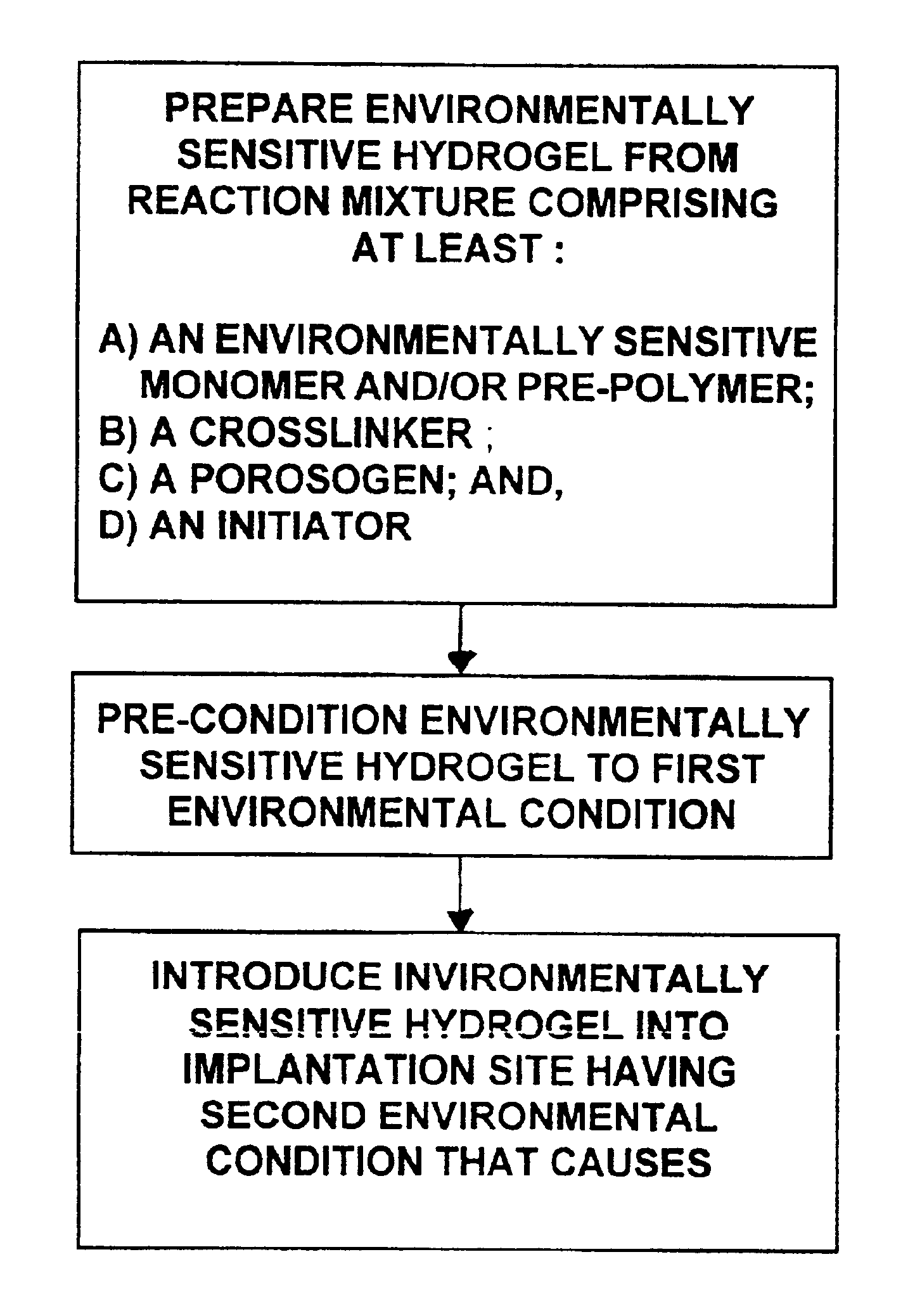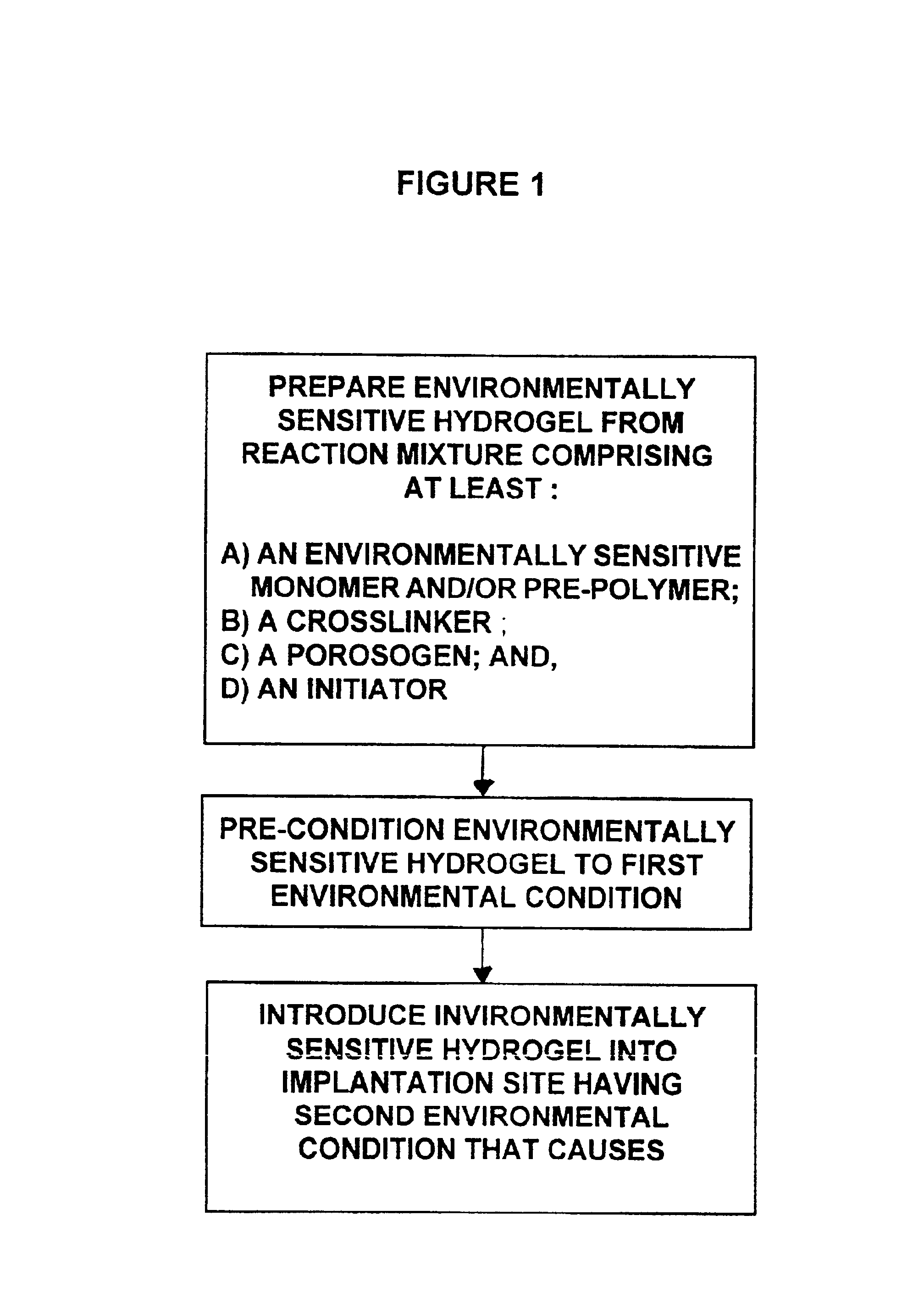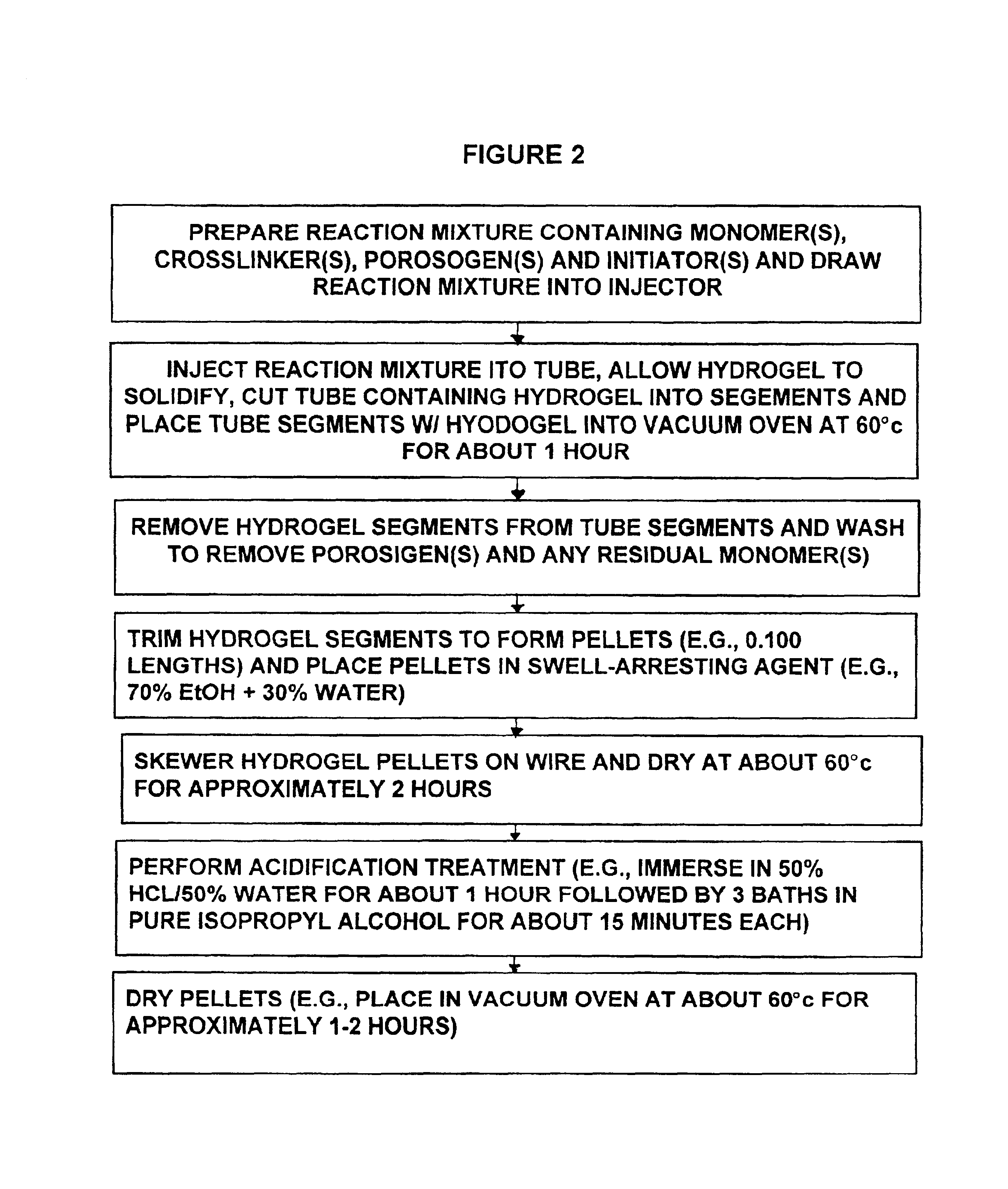Hydrogels that undergo volumetric expansion in response to changes in their environment and their methods of manufacture and use
a technology of volumetric expansion and hydrogel, applied in the field of hydrogel composition, can solve the problems of polymer chain disengagement and subsequent swelling of the polymer network
- Summary
- Abstract
- Description
- Claims
- Application Information
AI Technical Summary
Benefits of technology
Problems solved by technology
Method used
Image
Examples
example 1
Method for Preparing Pellets of pH-Responsive Expandable Hydrogel
The hydrogel materials of this invention may be produced and used in various forms and configurations, such as sheets, wads, balls, pellets, filaments, etc. FIG. 2 shows a specific example of a presently preferred procedure that may be used to produce a pH-responsive expandable hydrogel of this invention in the from of solid pellets. In this procedure, the initial reaction mixture containing the ethylenically unsaturated monomer(s), ethylenically unsaturated crosslinker(s), porosigen(s) and any solvent(s) is mixed in a suitable vessel. The initiator(s) is / are then added to the mixture and the reaction mixture, while still in liquid form, is further mixed and drawn into a syringe or other suitable injector device. A tube (e.g., a polyethylene tube having an inner diameter of 0.015-0.100 inch and preferably 0.025 inch (id) tubing for the formation of small pellets useable in cerebral or other vascular applications) is at...
example 2
Embolization of Aneurysms
For the embolization of aneurysms, 1.52 g (0.021 moles) acrylamide, 0.87 g (0.009 moles) sodium acrylate, 0.005 g (0.00003 moles) N,N-methylenebisacrylamide, 7.95 g water, and 4.5 g sodium chloride (<10 micron particle size) are added to an amber jar. The initiators, 53 microliters of N,N,N′,N′-tetramethylethylenediamine and 65 microliters of 20% w / w ammonium persulfate in water, are added and the solution is aspirated into a 3-cc syringe. The solution is then injected into 0.025″ ID tubing and allowed to polymerize for 2 hours. The tubing is cut into 2-inch sections and dried in a vacuum oven. The dried hydrogel is removed from the tubing using a mandrel. The polymerized hydrogel is washed 3 times in distilled water for 10-12 hours, at least 2 hours and at least 2 hours, respectively, to remove porosigen, any unreacted monomer and any unincorporated monomers. The hydrogel is cut into sections (“pellets”) of approximately 0.100 inch length and skewered ...
example 3
Embolization of Arterio-Venous Malformations
To make material suitable for the embolization of arterio-venous malformations, 1.52 g (0.021 moles) acrylamide, 0.87 g (0.009 moles) sodium acrylate, 0.005 g (0.00003 moles) N,N-methylenebisacrylamide, 7.95 g water, and 4.5 g sodium chloride (<10 micron particle size) are added to an amber jar. The initiators, 53 microliters of N,N,N′,N′-tetramethylethylenediamine and 65 microliters of 20% w / w ammonium persulfate in water, are added and the solution is aspirated into a 3-cc syringe. The solution is allowed to polymerize inside the syringe for 2 hours. The syringe is removed using a razor blade and the hydrogel is dried in the vacuum oven.
The dried hydrogel is washed three times in distilled water for 10-12 hours, 2 hours and 2 hours, respectively, to remove the porosigen, any unreacted monomer and any unincorporated oligomer(s). The hydrogel is then dehydrated in ethanol and dried under vacuum at about 55C. for approximately 2 hours....
PUM
| Property | Measurement | Unit |
|---|---|---|
| particle size | aaaaa | aaaaa |
| particle size | aaaaa | aaaaa |
| inner diameter | aaaaa | aaaaa |
Abstract
Description
Claims
Application Information
 Login to View More
Login to View More - R&D
- Intellectual Property
- Life Sciences
- Materials
- Tech Scout
- Unparalleled Data Quality
- Higher Quality Content
- 60% Fewer Hallucinations
Browse by: Latest US Patents, China's latest patents, Technical Efficacy Thesaurus, Application Domain, Technology Topic, Popular Technical Reports.
© 2025 PatSnap. All rights reserved.Legal|Privacy policy|Modern Slavery Act Transparency Statement|Sitemap|About US| Contact US: help@patsnap.com



